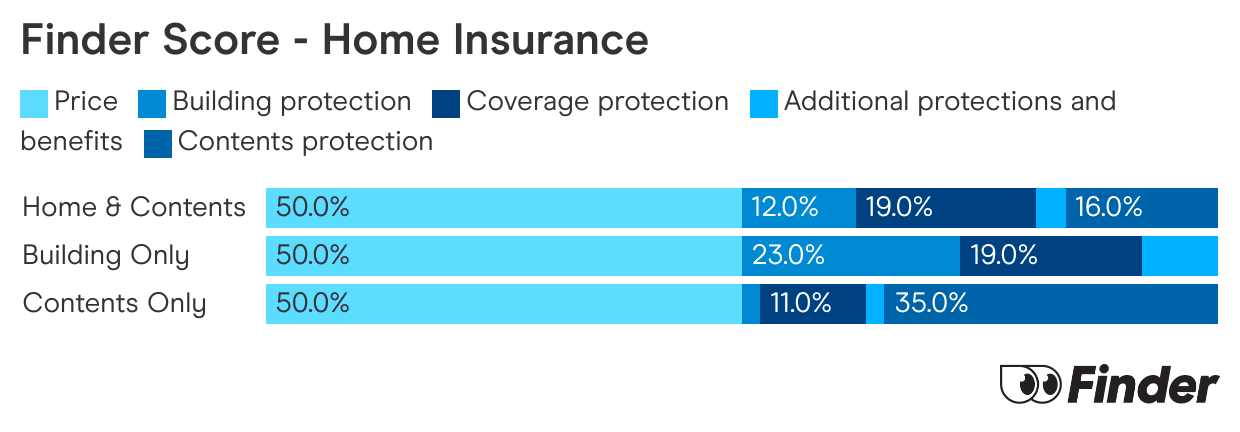Pets are an integral part of the family for millions of Australians and we welcome our furry friends into our homes and hearts more than ever before. But living with pets doesn't always go so smoothly as we'd like. And it's important to know why your home insurance won't usually cover you if your pet causes accidental damage to your house or contents.
Is pet damage automatically included in your home insurance policy?
Not necessarily. In fact, many insurers don’t offer accidental damage cover as standard, and you’ll need to purchase it as an optional extra if you want to be covered for loss or damage caused by unfortunate mishaps. Even then, some policies will exclude damage caused by pets, so you’ll need to read the fine print to check whether this exclusion will affect your cover.
However, while you should never assume that pet damage is automatically included in your home insurance policy, it is possible to find the cover you need. Once you have a policy that covers accidental damage and doesn’t exclude damage caused by pets, you can enjoy the peace of mind that comes with knowing your home and your contents can be covered if your dog or cat scratches the walls, for example, or knocks the TV over and smashes the screen.

What is accidental damage?
Accidental damage is harm to your home or contents caused by an unforeseen, one-off incident. For example, if you spill red wine on the carpet or if a kids’ game gets out of hand and leaves you with a smashed computer, either of these would be classed as accidental damage.
While many people assume that accidental damage will always be covered by home insurance, this isn’t always the case. Many insurers only offer accidental damage cover as an extra-cost option, though there are some providers that include it as standard.
Exclusions also affect the type of situations and accidents that are covered – for example, you may not be covered if your pet urinates on a guest’s contents – so it’s important to read the Product Disclosure Statement (PDS) closely before buying cover.
Will pet insurance cover damage to the home?
No. Don’t expect your pet insurance policy to cover you when your pet accidentally damages your home or contents – it simply isn’t designed to provide this type of cover. Instead, pet insurance offers a similar sort of cover to what health insurance provides for people.
Pet insurance covers up to 80% of your vet bills when your pet suffers an illness or injury, while many policies also provide additional cover for routine care procedures like vaccinations and desexing.
What pet cover will home insurance provide?
How can home insurance cover you and your pet? There are a few key areas of cover that may provide important benefits for you:
- Accidental damage. If you select accidental damage cover, your policy can cover your pets causing accidental damage to your building and contents. So if your pitbull gets a little over-excited watching Bondi Vet and accidentally knocks your TV over, your contents insurance can provide the protection you need.
- Pet cover. Often offered as an extra-cost option, pet cover under a home insurance policy can provide similar protection to a pet insurance policy. This option provides cover for your veterinary bills when your dog or cat suffers an accidental injury.
- Temporary accommodation for your pet. If your house and/or contents are damaged by an insured event and your home is uninhabitable as a result, you may need to put your pet in a boarding facility until it’s safe to return home. When this happens, most policies will provide cover for pet boarding fees.
Find home and contents insurance that meets your needs
Compare other products
We currently don't have that product, but here are others to consider:
How we picked theseFinder Score - Home Insurance
We crunch eligible home insurance products in Australia to see how they stack up. We rank over 50 products on 16 different features, including price. We end up with a single score out of 10 that helps you compare home insurance a bit faster. We assess home and contents, building only and contents only products individually.
Options for landlords
As a landlord, you have the final say on what pets (if any) are allowed to live on your property. Deciding to make your property pet-friendly can allow you to attract a much wider range of potential tenants, but there are always risks associated with opening your doors to furry, feathery or scaly tenants. From soiled carpets to claw marks on the walls, pets can potentially cause a wide range of damage to your home.
However, if you do decide to allow your tenants to keep pets, there are several simple things you can do to minimise the risk of pet damage affecting your property:
- Draw up a pet agreement. It’s often a good idea to set up a pet agreement between you and your tenant. This could outline any rules and guidelines you expect your tenant to follow – for example, having the carpet steam cleaned when they move out or maybe keeping their dog outside at all times – and the consequences if they fail to meet those requirements.
- Consider modifying the property. You can make some simple changes to your property to make it easier for tenants to maintain. For example, replacing carpets with easy-to-clean tiles or floorboards promises easier maintenance, while installing secure fencing will make your rental property an attractive option for tenants with outdoor pets.
- Inspect regularly. Conduct regular inspections to make sure the property is being well looked after and kept in reasonable condition. You can also check in with the neighbours to make sure the pet is not being a nuisance and creating too much noise.
- Maintain a good relationship. Maintaining a good relationship with your tenants is important regardless of whether they own pets or not, and is a great way to ensure that you find out about any pet-related issues as soon as they arise.
- Get landlord insurance. Not all landlord insurance policies will cover damage to the property caused by tenants’ pets, but some will. Compare your options and read the fine print to find a policy that protects you against pet damage as well as a range of other important risks, such as malicious tenant damage, loss of rental income and legal liability.
Options for renters
Finding a rental property is often hard enough, let alone finding a pet-friendly rental property. Many landlords will automatically oppose requests to keep pets, but there are several simple things you can do to help convince them that you’ll be a responsible tenant:
- Create a pet CV. If your landlord is “umm-ing and aah-ing” about whether or not to allow you to keep pets, consider creating a pet CV. Just like your own CV presents you in the best possible light to a prospective employer, this profile highlights your pet's best qualities to a potential landlord. It should include a photo, details of your pet’s breed and temperament, and details about their vaccinations, parasite treatment and microchipping and possibly a pet character references from previous property managers or your vet.
- Offer more rent. If your landlord is unsure whether the risk of allowing a pet into the property is worth it, you may want to consider paying a little extra rent each week to sweeten the deal.
- Suggest a trial period. Ask for a chance to prove that you are a responsible pet owner and your pet is an excellent tenant. If your landlord will allow you to keep a pet for a trial period, let’s say three months, this could give you the chance to show that you and your furry friend will keep the property safe and sound.
- Keep it clean. You have a responsibility to keep the property clean during your tenancy and also leave it in a fit state when you move out. However, some landlords may also only allow you to keep pets if you agree to have the carpets steam cleaned and/or deodorised when you move out.
- Choose the right property. If you own a Kelpie that needs to run 20km daily to stay happy and healthy, locking it in an apartment while you go off to work for ten hours each day is a disaster waiting to happen. By choosing a property that suits your pet, you can greatly reduce the risk of any unfortunate accidents and mishaps.
- Get renters insurance. Renters insurance provides cover for loss or damage to your contents caused by fire, theft, storm and a wide range of other insured events. Look for a policy that includes cover for accidental damage caused by pets or an aquarium, so you’ll be protected if your pitbull likes the look of your dinner and accidentally knocks the dining table (and everything on it) over and onto the carpet. You may also be able to add cover for veterinary bills if your pet suffers an accidental injury, plus enjoy cover for boarding costs when your contents are damaged by an insured event that leaves the property uninhabitable.
Welcoming your pet into your home ensures that you and your furry friend will develop a strong and lasting bond. However, it’s worth ensuring that you have the right home insurance cover in place before you let your pet become your new housemate.
Frequently Asked Questions
Sources
Ask a question
2 Responses
More guides on Finder
-
House break-ins in Australia: How to stay safe and reduce risk
Find out how many house break-ins happen in Australia each year, why the numbers are rising and what it means for your home insurance.
-
Food spoilage insurance
How home insurance can cover you for food spoilage and save you hundreds on wasted food.
-
Shed insurance
Shed insurance can cover sheds of all shapes and sizes, as well as their often-valuable contents.
-
Home insurance for water damage
Find out how home insurance can cover water damage and how to avoid some of the pitfalls.
-
How to cancel your home insurance
Cancelling your home insurance is actually quite simple and you can do it at any time.
-
Landlord insurance vs home insurance
Landlord insurance offers much more than just home insurance because it also protects your property as a business.
-
Home insurance for an unoccupied home
It’s possible to get home insurance for an unoccupied home, you just have to let your insurer know.
-
Motor burnout insurance
Motor burnout covers those big appliances in your home in the event that they let you down. This article will show you what it is, why it's important and how much it can cost you.
-
Coles Home Insurance review
Coles Home Insurance is convenient and generous with its rewards. Just don’t forget to read the fine print.
-
Phone insurance – all you need to know
With a variety of insurance options to protect your mobile phone, here's what you need to know.


i would like to conduct a home insurance comparison
Hi Michelle, You can use our main home insurance comparison to get started.